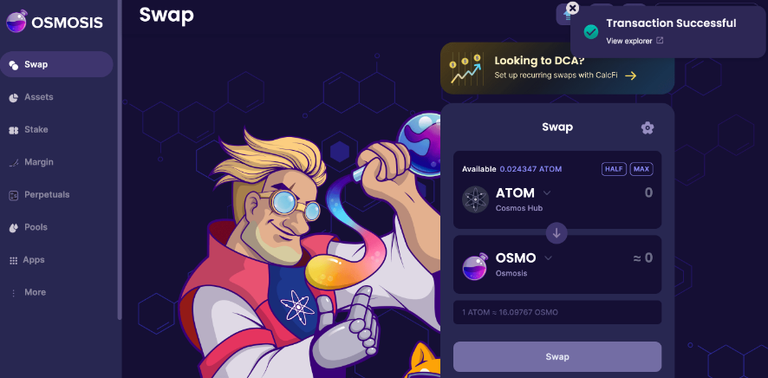In a previous article we covered three cross-chain DEXs (decentralized exchanges) that have continued building despite the persistent bear market. In this post, we will shift gears a bit and briefly cover the latest developments of two DEXs that are powering modular blockchain ecosystems.
As a monolithic blockchain, Ethereum did not scale well. For this reason, two modular blockchain frameworks emerged as scalable alternatives. The idea being that each decentralized application (dApp) would execute on its own blockchain, and they would be bridged together by a beacon chain or an interoperability layer.
The first framework we will cover in this post is Polkadot, followed by Cosmos. In each ecosystem there is a chain (DEX) whose primary function is the swapping of digital assets between the other blockchains. In Polkadot, the dominant DEX is Hydration (formerly HydraDX), and in Cosmos the leading DEX is Osmosis.
Hydration (HDX)
Built as a parachain on Polkadot, Hydration leverages the substrate framework, benefiting from Polkadot’s shared security, interoperability, and scalability. Its primary goal is to address the fragmentation of liquidity that often hinders DeFi ecosystems, particularly in a multichain environment like Polkadot which consists of over 100 parachains.

At the heart of Hydration is its Omnipool, an innovative Automated Market Maker (AMM) that consolidates all supported assets into a single liquidity pool. Unlike traditional AMMs that require separate pools for each trading pair, the Omnipool allows any asset to be traded against any other within the same pool. Moreover, its single-sided liquidity simplifies supplying assets for trading.
Beyond swaps, Hydration also offers lending and borrowing through its Money Market (a fork of AAVE v3) introduced in late 2024. It also plans to launch HOLLAR, a new over-collateralized stablecoin which will provide price stability within the ecosystem.
Osmosis (OSMO)
Osmosis is a DEX and AMM protocol built on the Cosmos SDK, designed to facilitate efficient and interoperable trading of tokens across Cosmos-based blockchains. Osmosis operates as an application-specific blockchain (appchain) using Inter-Blockchain Communication (IBC) to enable seamless cross-chain transactions.
Osmosis is known for its clean UI/UX and role as a Cosmos DeFi cornerstone.

A "token portal" called Polaris is under development by Osmosis contributors. Unveiled at Solana Breakpoint in 2024, Polaris tackles "the Great Chain Divide" in DeFi by offering a unified interface to trade tokens across both Cosmos and external chains. It features 1-click trading, multi-chain portfolio tracking, and bridge abstraction.
Until next time...
While Ethereum continues to build-out a fragmented layer 2 ecosystem, modular blockchain frameworks like Polkadot and Cosmos have also been advancing forward, but with the advantage of scalability and interoperability built-in from inception.
DEXs like Hydration and Osmosis glue these blockchain ecosystems together, allowing tokens to be seamlessly transferred between related chains. These exchanges are must-watch innovators as we head into 2025.
If you learned something new from this article, be sure to check out my other posts on crypto and finance here on the Hive blockchain. You can also follow me on InLeo for more frequent updates.
Resources
Hydration Logo [1]
Osmosis Logo [2]
Further Reading
- Using the Keplr Wallet to Interact With The Cosmos Ecosystem
- How To Invest In The Polkadot Ecosystem Using The Talisman Wallet And HydraDX
Posted Using INLEO
I think Hydration and Osmosis can make trading easier. It would be great if more people used these platforms for smoother blockchain connections and faster transactions too. I like the initiative of this